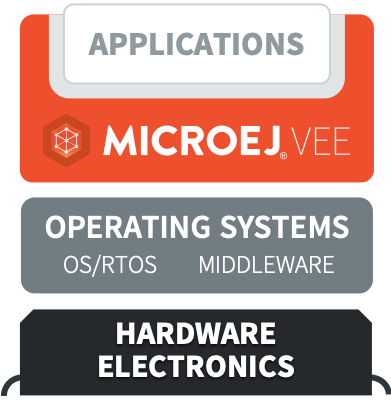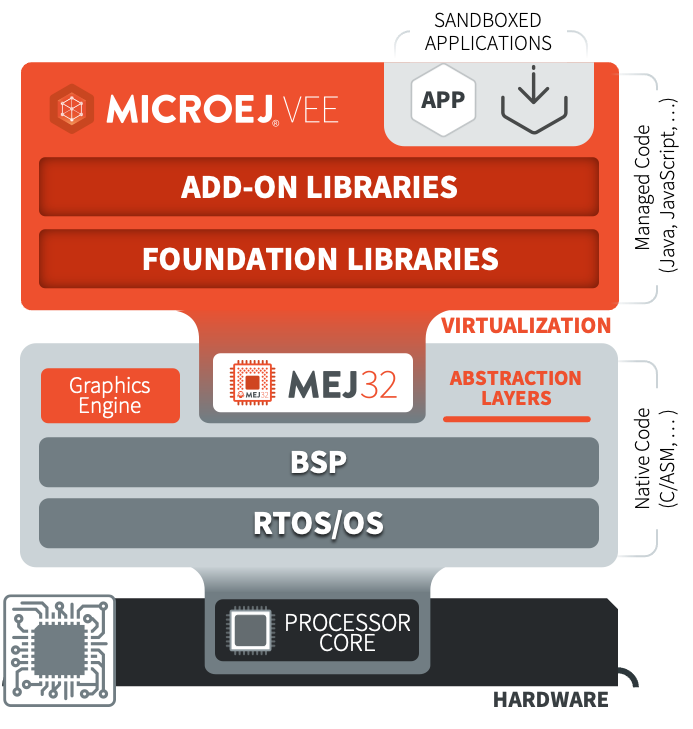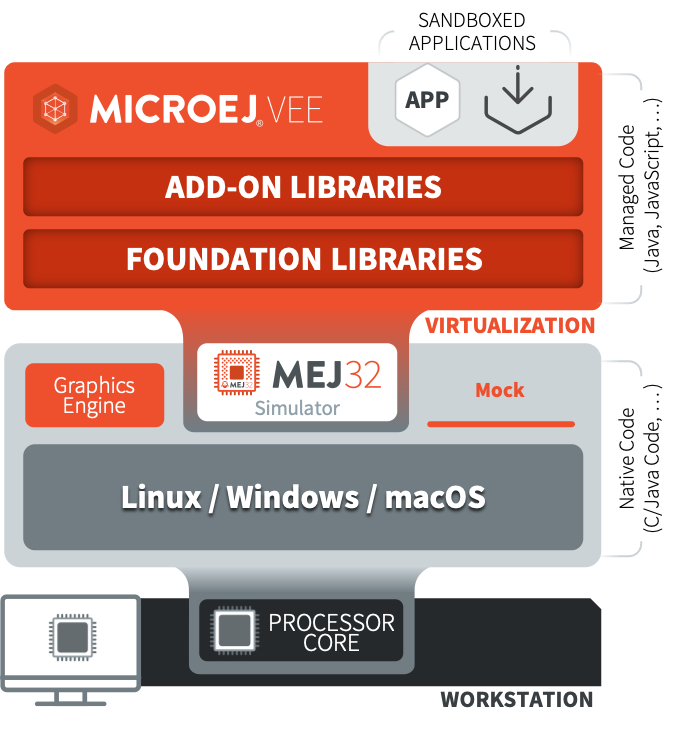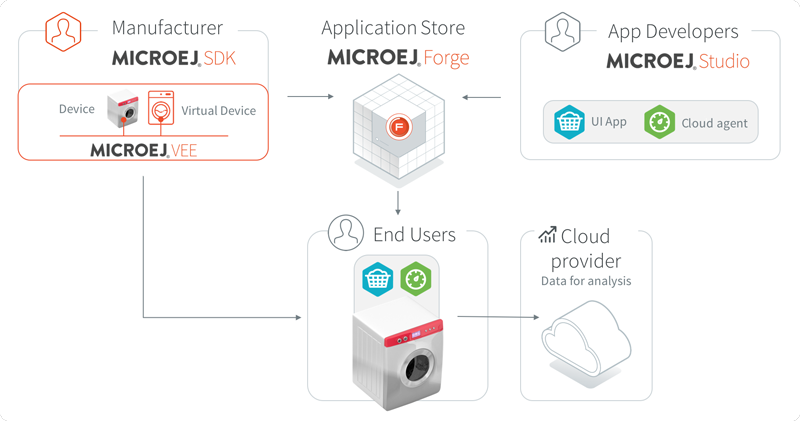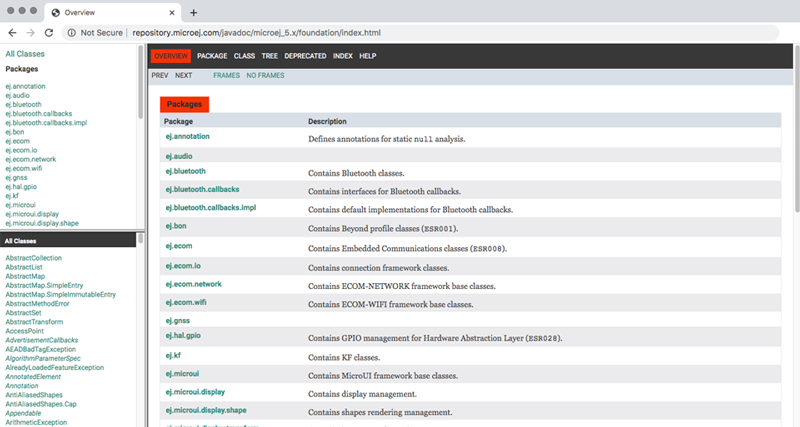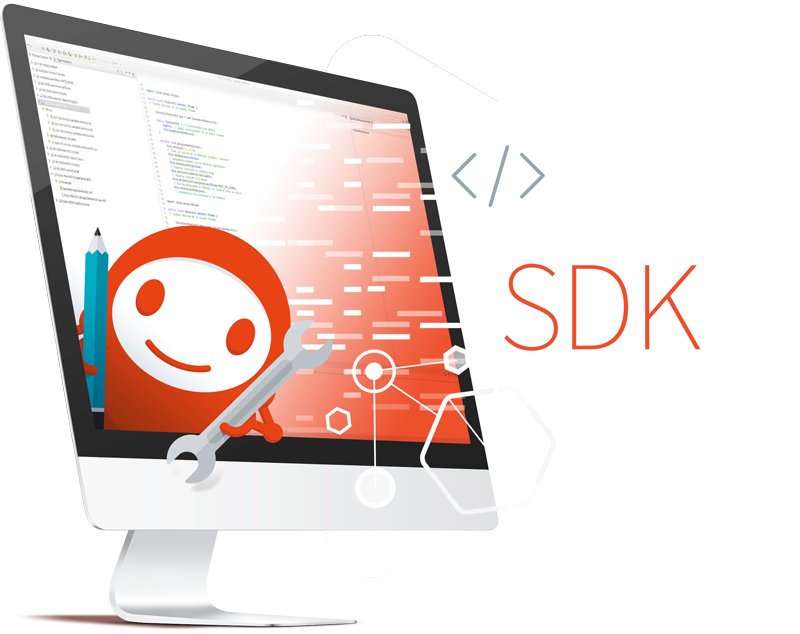TECHNOLOGY
MicroEJ Virtual Execution Environment
MICROEJ VEE is an application container dedicated to embedded systems. VEE stands for Virtual Execution Environment, and embeds a 32-bit virtual processor (MEJ32), a smart memory usage optimizer, along with a wide range of libraries.
MICROEJ VEE runs on any OS/RTOS commonly used in embedded systems (FreeRTOS, QP/C, ucOS, ThreadX, Mbed OS, VxWorks, PikeOS, Integrity, Blackberry QNX Neutrino, Zephyr Project, Linux, etc.) and can also run without RTOS (bare-metal) or proprietary RTOS.
MICROEJ VEE is compatible with all processor architectures available on the market (ARM Cortex-M/A, Renesas RX and V850, MIPS, Infineon Tricore, x86, Tensilica Xtensa, etc.), and supports C toolchains such as GCC, IAR, Keil (Arm compiler), Clang and GreenHills.
More info:

